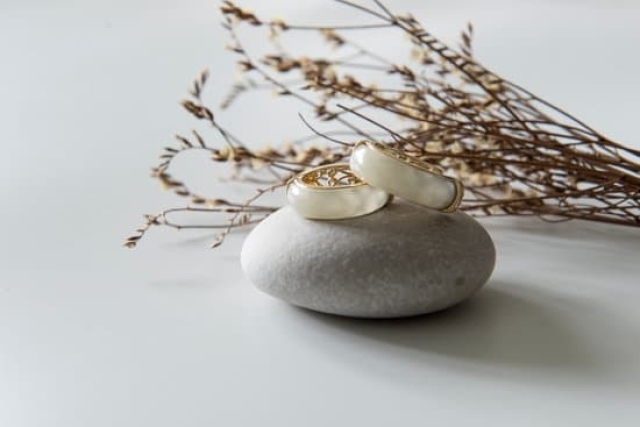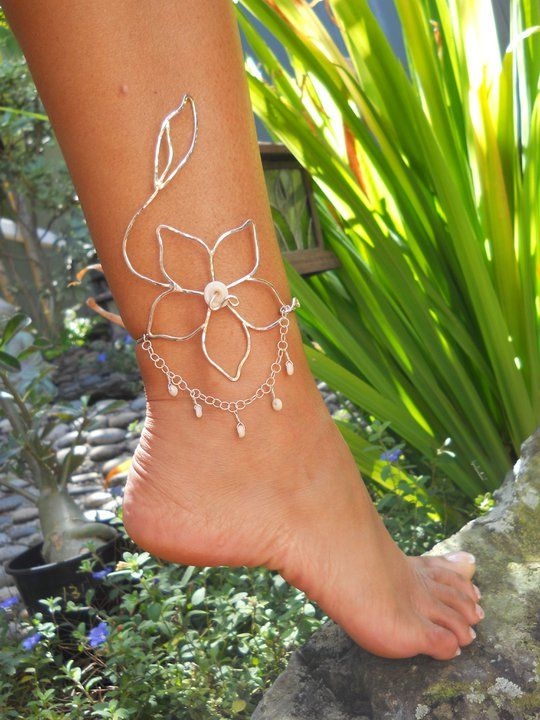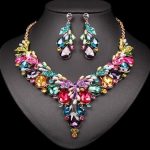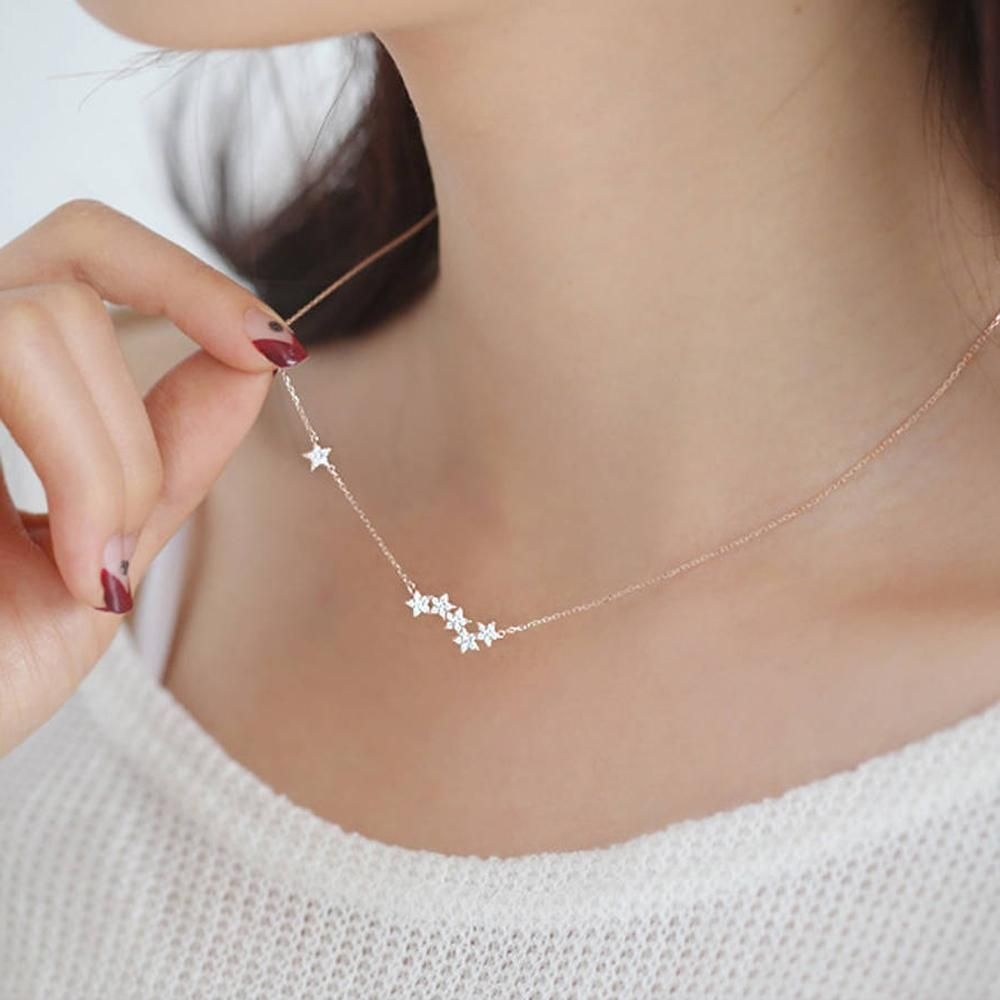Jewelry making materials have been around since ancient times, and today they are used in an increasingly wide range of applications. Whether it’s for a Hobby or Professional Jeweler, the types of jewelry making materials that can be used vary widely and offer lots of creative options when creating unique pieces. Many people enjoy working with these materials because they come in so many shapes, sizes, and colors providing plenty of possibilities for creation.
In terms of actually working with jewelry making materials, metal is usually the main type of material used due to its malleability and durability that makes it perfect for fashioning into intricate pieces. Additionally, gemstones are often sourced from specialty shops to add extra detail and color.
Gemstones come in a wide variety of sizes, shapes and colors depending on what is wanted for the finished product. Stones such as diamonds, rubies and sapphires offer very high-end looks while more affordable stones like crystal, cubic zirconia, glass beads or semi-precious stones can work just as well.
Whenever one chooses to work with jewelry making materials certain safety precautions must be taken into consideration. Safety glasses should always be worn when using hard metals or power tools to avoid eye injuries; rubber gloves should also be worn to prevent skin irritation from gems or metal toxins contained within the actual material itself.
Lastly using proper ergonomic behaviors by avoiding extremes such as excessive force or bending positions is advised to reduce risk from long term impairments to hands or wrists. By following these simple safety guidelines any aspiring artisan can safely construct beautiful creations without risking their own health or wellbeing.
Types of Bases and Findings
Base metal and findings are the core components of jewelry making. They provide the structure to which you can add materials such as gems, beads, and charms. These components are available in a variety of different metals, colors, and finishes and come in many shapes, sizes, and designs.
The most common base metals used for jewelry making include brass, copper, bronze, aluminum, pewter, sterling silver, gold-Illuminate and Vermeil (gold plated sterling silver), rose gold fill (gold plated copper with a heavy gold coating). Each type of metal has its own unique properties that give it distinct advantages over others.
For example: brass is comparatively inexpensive making it great for beginners; copper is strong and durable making it ideal for jewelry pieces that will be worn often; sterling silver is one of the most popular metals because its shine is long lasting; gold fill won’t tarnish easily so pieces made with it can endure all kinds of weather elements.
Other materials often used as bases or findings are plastic or rubber. Plastic provides light weight flexibility while rubber lends itself well to structural stability depending on how thick or thin the material is. Plastic has become increasingly popular because it comes in a range of colors – from bright neon hues to more muted pastels – allowing you to create vibrant pieces easily. Rubber beads come in various textures – including glittery variations – adding interesting details to your jewelry design.
Essential Tools for Working With Jewelry Making Materials
Jewelry making is a craft that requires many different materials and tools to bring ideas to life. Working with jewelry making materials can be fun, and it’s important to have the right equipment when you need it. Wire cutters, pliers, files and hammers are essential tools for creating beautiful jewelry pieces. Knowing which tool to use for each part of the project is key.
Wire cutters are usually used for cutting through wire or sheet metal jewelry components like jump rings, pins and clasps. The size of the wire cutter should match the diameter of the wire you intend to cut; this will ensure cleaner cuts with minimal damage to the material. Pliers come in various shapes and sizes such as needle nose, bent nose, flat nose and chain nose.
It is useful to have several types of pliers so that you can pick the one best suited for what you need to accomplish in each step of your design process. Needle nose pliers are best used for reaching into tight spaces while bent nose pliers are great for gripping small items tightly that may otherwise slip away from other kinds of pliers.
Files are also helpful when dealing with jewelry making materials because they can be used to make small adjustments by either filing off excess material or smoothing edges if needed. Files come in many different shapes like round, half-round, square and triangular depending on what kind of shaping you need done or how much material needs removed at once or slowly over time.
Hammers are sometimes used as well if you’re looking to create texture on metal surfaces or want sturdy structures when hammering items together such as soldering findings around headpins when making earrings or necklaces using jump rings and chains links. Ball peen hammer heads work best for creating patterns on metal surfaces along with chasing tools which both help achieve texture without deforming them too much.
By becoming familiar with all of these tools and understanding how they should be used in tandem properly can really help elevate your jewelry projects from amateur look downgraded pieces into better quality creations that hopefully hold up against wear and tear over time.
Choosing the Right Jewelry Making Materials for Your Design
When it comes to jewelry making, the materials you use can really make or break your design. For starters, different materials offer varying levels of malleability and durability, which can alter the visual appearance and overall life of the finished item. Additionally, certain items may require certain tools or techniques in order to be worked with properly. With all this in mind, it’s important to consider each type of material carefully before committing to any project.
One of the most popular materials used in jewelry crafting is metal. Metals are relatively easy to work with and are generally quite malleable depending on their composition; metals such as gold, silver and copper offer ideal strength while also allowing you to create intricate shapes and details.
Other types of metal include brass, nickel alloy and stainless steel – all three can be melted down, shaped and polished for a unique finish. One common issue associated with metal is oxidation (or tarnishing) which can occur over time – however this can often be mitigated through regular polishing.
Gemstones make a great option for those looking for eye-catching jewelry pieces; they come in a variety of sizes, cuts and types that provide both visual effect and symbolism within the design. Stones like diamonds are known for their hardy nature whereas softer gems such as amethyst may require more delicate treatment when incorporated into jewelry projects.
As with metals, gemstones offer distinctive properties (think colour/clarity); however when cost efficiency is a factor one may opt for synthetic stones instead or other accessible alternatives such as Swarovski crystals or glass beads – both offering interesting colour play at a fraction of price tag normally associated with precious stones.
Finally we have pearls; freshwater pearls look particularly elegant in necklaces while larger varieties then make perfect accents on bracelets or earrings once they’re cut down to size. Pearls need special handling due their delicate texture so take extra care when stringing them together with other items as friction could decrease their luster over time (or worse).
In conclusion there’s no right choice when selecting material for your jewelry designs but by weighing out pros and cons associated with each type of material you’ll likely find something that works best for your project’s purpose.
Working With Precious Metals
To become an adept metalsmith, it’s important to familiarize yourself with the techniques and principles of metalsmithing. This is a crucial step in understanding the best tools, techniques, and materials needed to achieve optimal results. Precious metals – including gold, silver and platinum – are particularly difficult materials to work with due to their malleability and will require plenty of practice and patience before you can master their intricacies.
In terms of tools, goldsmiths will require various saw blades, pliers, burs, hammers and stakes. Saw blades provide precision cuts as well as create curved shapes by sawing between peg-holes on a square plate or round plate mesh. Pliers can manipulate wires into any shape, while burs are great for grinding down sharp edges or polishing surfaces or recesses.
Hammers add specific textures to flat pieces or around stones and stakes help to form complexes shapes from flat pieces of metal. Since these are highly specialized tools for working with precious metals, it’s important to invest in good quality set that you can use for a long time.
When it comes to manipulating precious metals such as gold or silver into desired shapes or objects, it’s important to remember some key principles behind metalsmithing; Such as how each piece must be placed perfectly within each other in order not just look right but actually fit together as one solid unit without bending out of shape under pressure.
One trick discovered by many experienced jewellery makers is using soapy water in between parts when soldering them together because heat travels more easily through this paste than air does making sure not only that you won’t burn any pieces but also that all points will connect properly without leaving any gaps due too quick cooling down periods.
Finally since some tools such as hammers used to design certain sections tend towards hardening the metal quicker than usual temperatures applied during soldering then these have to be dealt with patiently if you wish them not turn into brittle surfaces post assembly process.
Popular Jewelry Making Materials
Jewelry making is a creative and gratifying hobby, with so many different types of materials to choose from. As a beginner jewelry maker, you’ve probably heard of the three main material types: metals (which include precious and semi-precious), beads, and findings. Each type offers its own unique shopping experience, so it helps to understand the basics before taking your first foray into the world of jewelry making.
Metals are used to make strong frames for necklaces, earrings, bracelets and other pieces which need a secure base that can also look elegant. The two most popular options among jewelry makers are precious metals such as gold or silver, which offer lustrous shine that’s resistant to tarnishing or oxidization.
Semi-precious metals such as brass or bronze are less expensive alternatives that come in a wide range of colors and finishes. It is possible to find options in both categories at affordable prices by shopping around online or at specialty bead stores.
Beads come in all shapes, sizes and colors and give an eye-catching element to any piece of jewelry. Beads are often made of glass, wood or stone though there are plenty more materials – including gemstones – available depending on your budget and style preference. There are also some great pre-made bead strings so you don’t have waste time stringing them up yourself – perfect for when you’re just starting out.
Findings refer to all the small pieces needed to complete jewelry designs – these include earring hooks, clasps, jump rings, crimps and chain links etc. High quality findings come in sterling silver or gold plated brass but there are also some great affordable alternatives available made from base metals such as copper or nickel which offer good value for money.
Whether you’re creating stunning new pendants for sale or designing one-of-a-kind gift items for family members, it helps understand the different kinds of materials available – plus budgeting tips – before purchasing supplies for your next project. From precious metals like gold and silver through beads made from crystal & glass to finding like chain links & crimps; there really is something special out there waiting to help bring your creative visions into reality.
Finishing Your Jewelry Projects
Jewelry making is an enjoyable craft that can be a great introduction to the wonderful world of art, and with the right setup, the results can be professional looking. There is an abundance of tools and materials available that all serve a purpose when it comes to jewelry making.
The first piece of equipment you will need to consider is a wire cutter or flush cutters. Both types are made specifically for cutting soft wires like gold-filled, sterling silver, and in some cases steel.
After cutting your desired metal, excess metal sheen should be wiped away to rid it of any sharp edges that could potentially snag clothing or other items. Depending on your design you may also want to consider using files and different bead rasp styles in order to refine the finish of each part.
Tools and findings for jewelry making are another essential requirement for creating quality pieces. Jewelry requires joining multiple components either through soldering or gluing; whether its creating jump rings or using crimps or rivets, these findings help keep everything safe and sturdy together.
Every piece must have secure locks such as clasps in order for them to remain connected after use without risk of them falling apart or losing pieces due to wear and tear over time. A good closure will depend on how strong its connection is since the last thing you want is the clasp opening up while wearers are enjoying their jewelry designs.
When it comes to adding a final touch, there’s never been a better way than with color choices. Adding beads can make unique patterns while patinas provide washes of intense color transformation options when combined with oxidized metals – this alchemy gives your piece an antique feel that turns more heads than plain metals alone ever would.
With so many colors available now, anyone has endless opportunities to express themselves with just one simple change in material choice. Lastly but most importantly when finishing an exquisite piece polished surfaces ensure shine and mystery are added – after all diamond dust provides unparalleled sparkle potential so make sure not miss out on this creative opportunity.
Crafting Jewelry
Jewelry making is an incredibly fun and rewarding hobby that anyone can get into. Whether you are a beginner, advanced or somewhere in between, there is something for everyone. One key to successful jewelry making is having the right materials. Without knowing what materials to use, your design will never be complete and your overall project won’t come together as you envisioned it. To make the perfect jewelry project, here are some of the most common materials used:
The first material needed for jewelry making is metal. Metals such as silver, gold, brass, copper and aluminum provide both the structural stability and the decorative beauty that is so characteristic of many pieces of jewelry. Metal can be shaped with hand tools or it can be cut using a power saw or rotary tool for more intricate pieces. It can also be melted down and then cast in molds from clay or plaster to create unique designs.
Another important material in jewelry making is stones and gems. These beautifully hued stones add sparkle and shine to any piece of jewelry but they must be chosen carefully based on size and color to ensure they complement each other well.
Gems may need to be cut into particular sizes before being added to pieces of jewelry, either done manually with a chisel and hammer by skilled jewelers or by utilizing machines such as lapidary saws or grinders depending on what best suits your needs while creating a specific design.
Finally wires are essential in wire-wrapping techniques often used when creating designs with gemstones and beads as well as stringing pearls together with fine silk thread. Different gauges are available depending on the item being made – thin wires for delicate necklace pieces whereas thicker umbrellas for bracelets require sturdier materials – ensuring that whatever item you craft lasts through all life’s occasions before it eventually wears out from extensive handling over time.
Wires come in a range of color-based finishes from dull grays to shiny golds completing any design you choose with flair.
With these tools at your disposal, there is no limit to what kind of creative projects you can complete when crafting jewelry items. Combine these materials with patience & creativity for endless possibilities when creating beautiful pieces that you can wear proudly or pass down through generations reflecting timeless fashions that last long beyond current trends trending today.

Welcome to my jewelry blog! My name is Sarah and I am the owner of this blog.
I love making jewelry and sharing my creations with others.
So whether you’re someone who loves wearing jewelry yourself or simply enjoys learning about it, be sure to check out my blog for insightful posts on everything related to this exciting topic!





